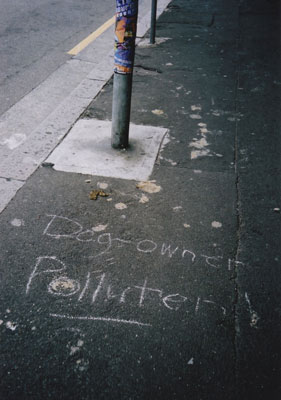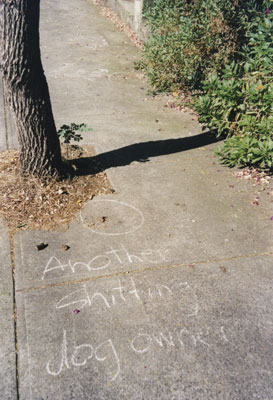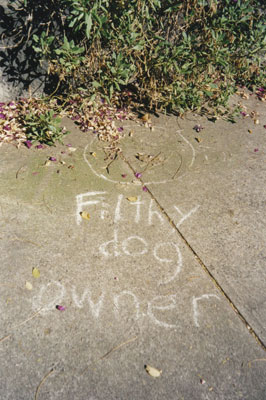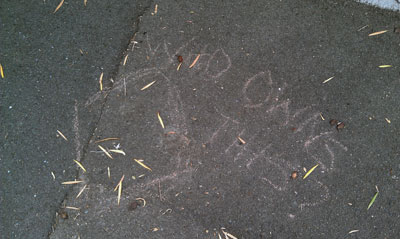In the city, life is complicated and boundaries are indistinct. Because people’s lives butt up against each other, behaviour is bound by rules of social etiquette. Feelings of loss and frustration are exacerbated when others overstep boundaries and fail to observe ‘the rules’. When this happens, people look for ways to re-establish their individuality.
The lowly pavement – that shared space that belongs to everyone and no one – is sometimes co-opted by people attempting to assert themselves. The anonymous airing of petty grievances on and about the pavement is a satisfying way of alleviating feelings of powerlessness.
People paint ‘Bread is making birds sick’ on areas where other people feed pigeons; they chalk circles around dog droppings and write ‘Filthy dog owner’.
Their notices are rather like the notes that are left in the kitchens and bathrooms of workplaces and share houses to ‘Wash up after yourself’ and ‘Use the toilet brush’. Someone who ‘breaks the rules’ is rebuked, without the need for face-to-face confrontation. Pavement remonstrations are delivered and received with eyes lowered, and in this way public decorum is maintained.
For more about this kind of graffiti see:
Hicks, Megan, 2011, ‘Surface reflections: Personal graffiti on the pavement’, Australasian Journal of Popular Culture 1(3): 365 – 382.




